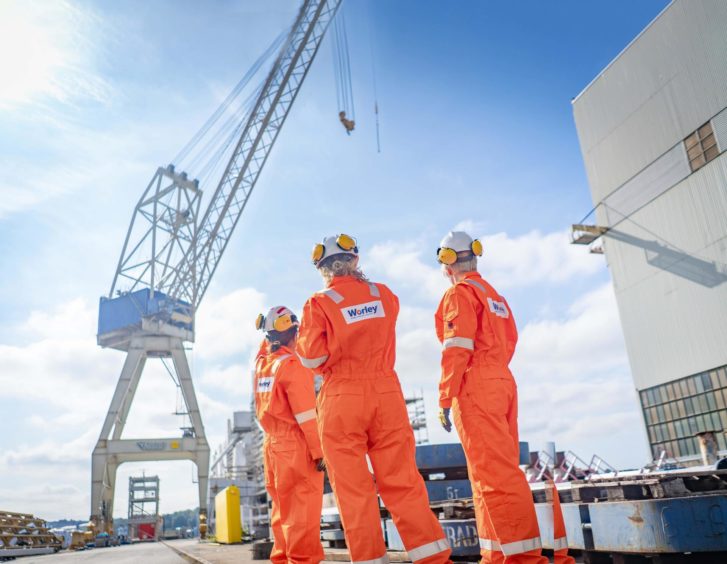
Decarbonisation of our economies is an enormous challenge, one we’ve made harder through slow action to date. But the world is moving inexorably to net zero now and it will be a hell of a ride.
Businesses and governments must turn their minds to the delivery challenge and transform how they engage communities and develop and deliver projects.
If we want to get to net zero by mid-century and limit warming to 1.5°C, we must dramatically rethink the way we deliver infrastructure.
We also need to monitor, report, and adjust our behaviors and practices along the way. So, what does that look like?
It’s all about infrastructure
Unless we build the infrastructure of net zero – the pipelines, the solar power and wind farms, the new nuclear facilities, the hydrogen terminals, the carbon capture and storage facilities, the bio-refineries and more – we will fail to keep to 1.5°C.
Not only do we need this infrastructure, but we need it delivered at unprecedented pace and scale. To achieve this a radical paradigm shift is required from governments, the energy sector, broader business, NGOs, and communities.
Take decarbonising Australia for example – Net Zero Australia (NZAus) Consortium’s work to set out different scenarios to a mid-century net zero point all showed that regardless of route, each requires a big infrastructure play. Consider that under most scenarios studied, Australia would need to replicate the entire world renewable energy fleet – something that has taken more than 100 years to develop – in a little under 30 years. Australia will also need new nation-spanning transmission grids and carbon dioxide pipelines, and vast hydrogen and carbon capture and storage facilities. To do so they’ll need to find a million additional workers, in a country whose working population is only around 14 million.
Australia represents about 3% of world primary energy production, and most major economies in the world face a very similar challenge. Aggregating the collective numbers together, you start to see the challenge.
So, just how do we deliver those numbers by mid-century?
Radical change
In our latest From Ambition to Reality report, Measuring Change in the Race to Deliver Net Zero, researched in conjunction with Princeton’s Andlinger Center for Energy and the Environment, we explore how the challenge of keeping to the 1.5°C target can be met through five key shifts that will radically change the way we approach infrastructure.
We firstly need to broaden the definition of value in assessing projects. Financial value is critical, but so is social and environmental value, and these need to be central in infrastructure delivery thinking. The Inflation Reduction Act introduced by the US Administration gave a nod to this, acknowledging the critical role of a fair transition with 40% of the $27 billion investment going towards communities impacted by the energy transition.
We also need to be pragmatic on what technology we use. Our analysis shows that a fully renewable energy future is indeed possible, but we are simply not building the infrastructure fast enough. Reaching net zero will require every single technology solution we have – including some that may not have wide support. But if we want to reach the goal and limit the worst impacts of climate change, that’s what we must do.
And we cannot afford to build bespoke solutions. Standardised products, built to agreed global standards, manufactured in bulk and ahead of the development curve are needed. And projects need to move from sequential to running in parallel, being much more efficient with resources and supply chains.
Collaboration needs to be taken to a whole new level too. Global solutions will only be developed if countries collaborate and partner like never before. The same applies to infrastructure, with governments, financiers, developers, manufacturers, and builders having to form very uncomfortable alliances to build the necessary corporate momentum to drive large infrastructure plays.
And the glue holding all of this together will be use of more collaborative and powerful digital platforms. One example is the work being done by the FAST-Infra Consortium, which aims to digitise the financing of net zero assets, building liquidity into a market segment that is simply too slow. By addressing the root of the problem, a digitised project development, delivery, and reporting platform – aka a net-zero platform – will build the speed needed.
Driving change
As outlined in recent papers by the International Energy Agency (IEA) (World Energy Outlook) and the UN Environment Programme’s Emissions Gap Report, and the UN Secretary General’s impassioned opening speech at COP27, we still have a long way to go to close the gap between where we are and where we need to be by 2030.
This is the critical decade for action; if we have not changed our delivery practices by 2030, it will make achieving mid-century net zero very challenging.
Examining each shift, the report identifies three indicators of change – these are the things that will show to us whether our practices are changing, and whether our infrastructure delivery practices are beginning to align with the scale and speed needed.
The indicators will be measured in a unique, industry-wide, ‘Ambition to Reality’ survey that will be run by Princeton every year through to 2030. Expected to canvas more than 3,000 individual survey respondents, it will involve stakeholders across three global regions and 10 groupings including finance, regulatory, developer and engineering sectors.
The data from the survey will signal where we are aligning on making the necessary changes and where we are not and will be imperative for putting pressure on the right places to step up to the infrastructure delivery course needed to keep the 1.5°C target alive and well.
Recommended for you
